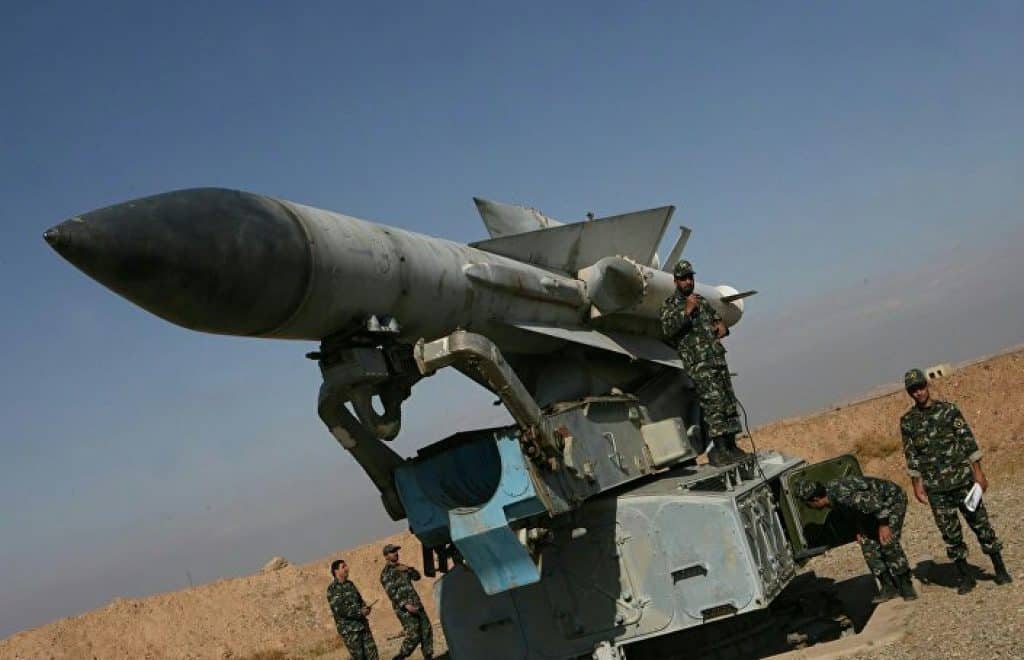
On Thursday morning the IDF (Israel Defense Forces) bombed several Syrian anti-aircraft batteries in a retaliatory response to an anti-aircraft missile exploding within 30 kilometers of Israel’s Dimona nuclear reactor.
The IDF published a statement acknowledging the incident and its retaliation against the Syrian forces.
“A surface-to-air missile was fired from Syria to Israel’s southern Negev. In response, we struck the battery from which the missile was launched and additional surface-to-air batteries in Syria,” the IDF tweeted.
IDF spokesperson Hidai Zilberman elaborated further about the incident and stressed that he did not believe the attack targeted the country’s nuclear reactor in the southern Negev.
“There was no intention of hitting the nuclear reactor in Dimona,” Zilberman remarked.
Additionally, the IDF acknowledged that it had launched an investigation into why its air defense systems failed to intercept the Syrian missile.
Syrian state-controlled media, citing a military source, reported Israel’s attack resulted in the injury of four Syrian soldiers and some material losses.
“At about 1:38 am today, the Israeli enemy carried out an air aggression with bursts of rockets from the direction of the occupied Syrian Golan, targeting some points in the vicinity of Damascus, and our air defense media confronted the aggression’s missiles and downed most of them. The aggression resulted in the wounding of four soldiers and some material losses,” SANA reported.
Official statements casts doubt, leads to a more probable explanation
Although both actors published statements, lack of evidence and detail supporting the official explanations about the incident casts doubt on what transpired Thursday morning.
The Syrian media statement claimed an attack occurred at 1:38 am local time, which was around the time a Red Alert (missile warning system) was activated for southern Israel. However, there were no local reports of an Israeli attack underway in Syria that would prompt Syrian air defense systems to launch an anti-aircraft missile.
It wasn’t until approximately an hour after the alert was made that the IDF attacked anti-aircraft batteries in southern Syria in retaliation for the missile exploding in southern Israel.
Which brings into question why the Syrians would fire an anti-aircraft missile if there was not an Israeli attack underway inside Syria.
It is the assessment of FDD’s Long War Journal that Syria likely fired an anti-aircraft missile targeting Israeli fighter jets in northern Israel in a preemptive attack. The missile missed its target and deviated towards southern Israel causing the Red Alert activation.
The assessment is primarily based on the lack of reliable sources reporting an attack prior to the Syrian’s targeting of Israeli fighter jets and the expectation of an imminent Israeli airstrike against a probable weapons shipment from Iran.
It is likely the Syrians were anticipating an Israeli airstrike due to a possible weapons shipment by a known IRGC-affiliated cargo plane that had arrived at Damascus airport on Wednesday. Additionally, an Israeli intelligence-gathering aircraft was reported by military aircraft observers during the arrival of the weapons shipment thus creating speculation that it was collecting intelligence for a future airstrike.
Also, there were no official statements by the IDF explicitly stating an Israeli fighter jet was targeted, despite some Israeli media claiming otherwise. The IDF may not have wanted to mention an aircraft was targeted, perhaps to avoid having to explain why its fighter jets were targeted in the first place.
The statement from Syrian media about an Israeli attack at 1:38 am is misleading and doesn’t mention the IDF’s retaliation for the Dimona incident which occurred about an hour after the time frame mentioned in the report. Moreover, the Syrian statement failed to mention that a captain in a Syrian air defense battalion was killed as a result of Israel’s retaliatory airstrikes.
Both statements seemed to be carefully worded and likely made to play down the incident that could have easily turned into a serious confrontation.
The targeting of Israeli fighter jets may indicate a change in Syrian tactics vis-à-vis Israel’s eight-year “between the wars campaign” against Iran’s PGM (Precision Guided Munition) project in Syria.
Considering Israel’s past responses to attacks by Syria, it remains to be seen if it will remain satisfied with destroying a few Syrian anti-aircraft batteries or if a more extensive operation is planned to deter possible preemptive attacks against its fighter jets in the future.







